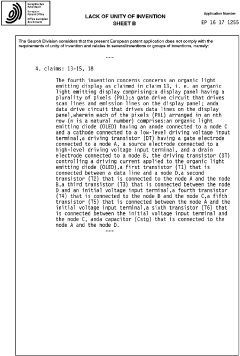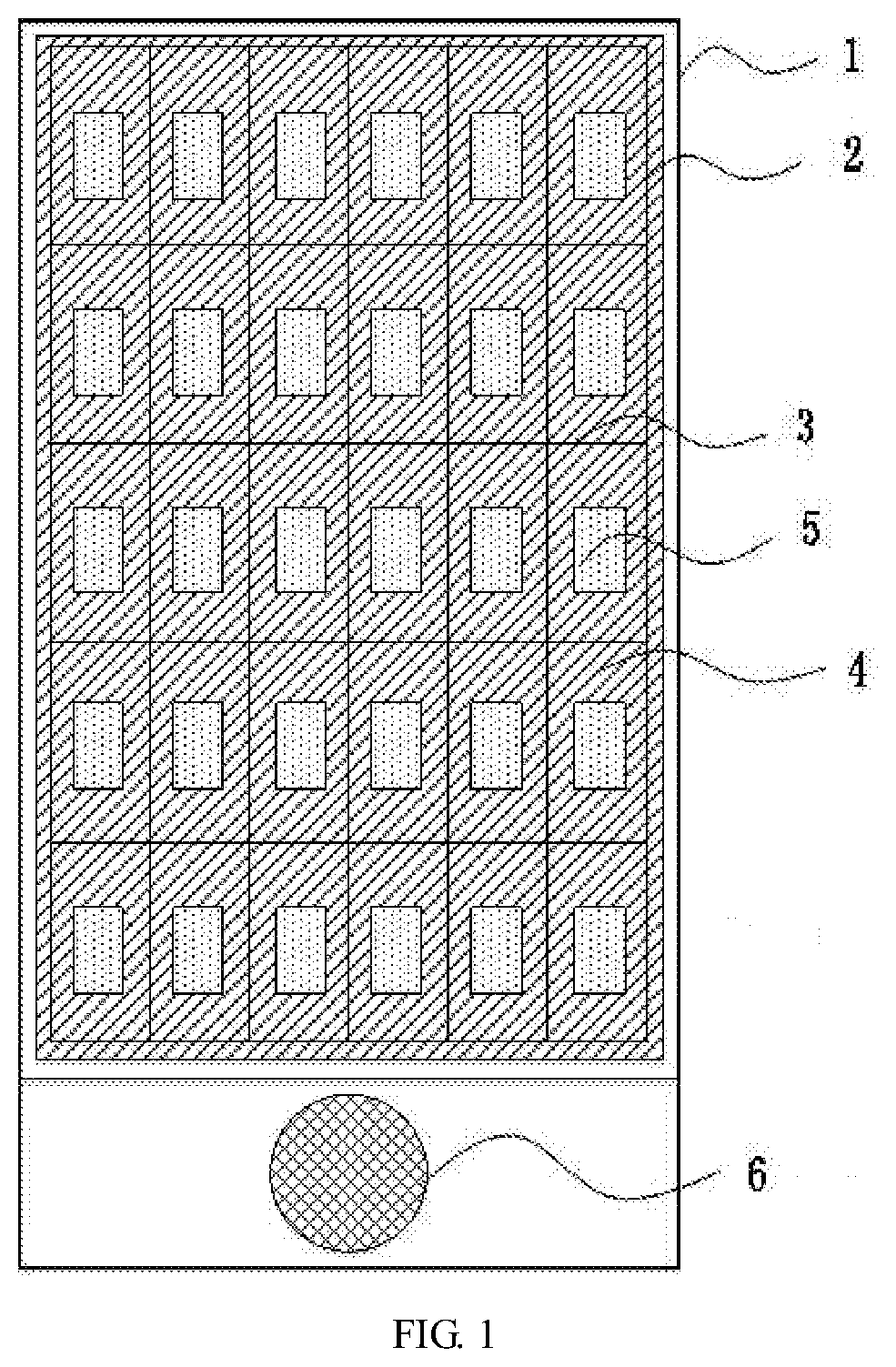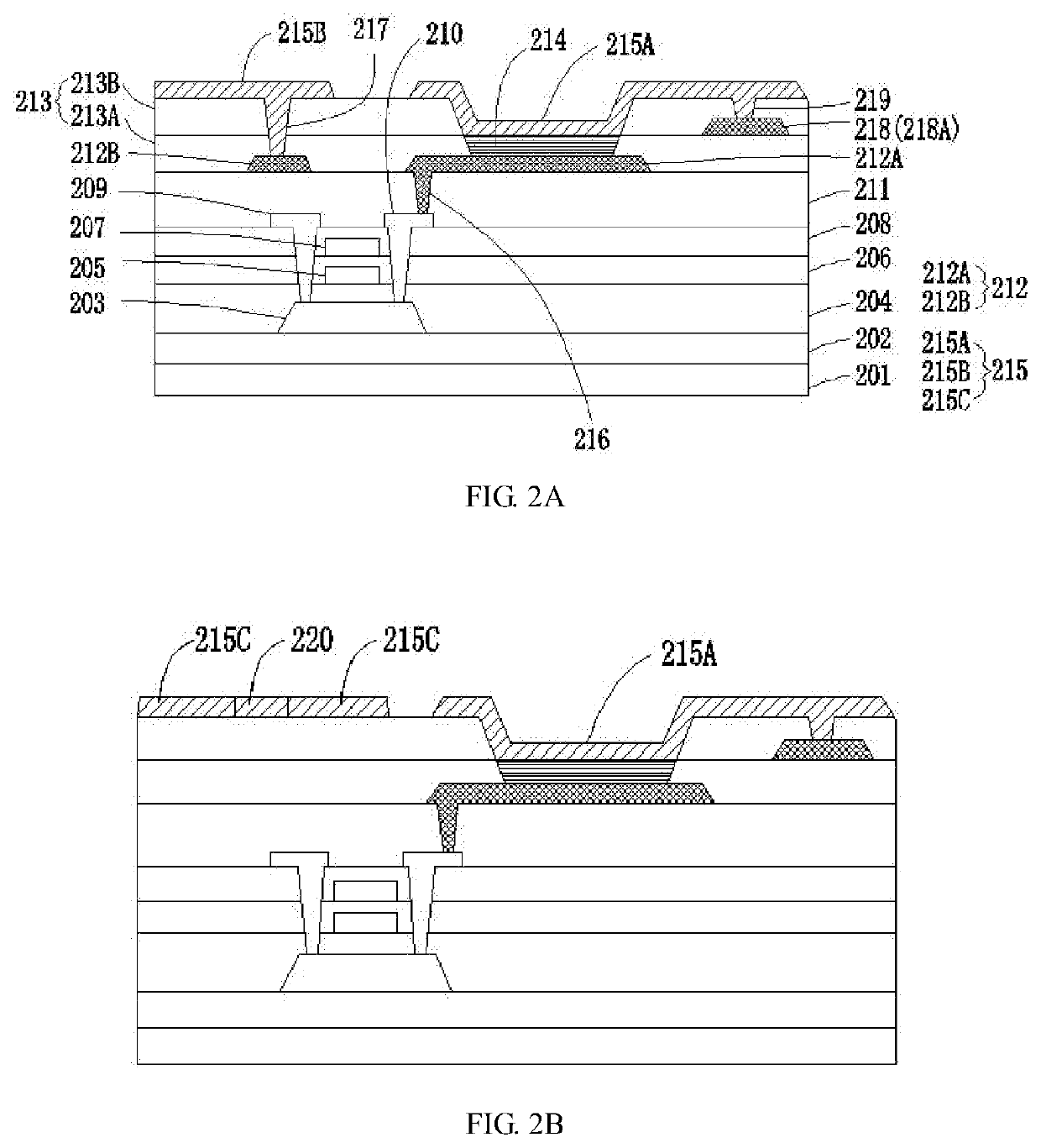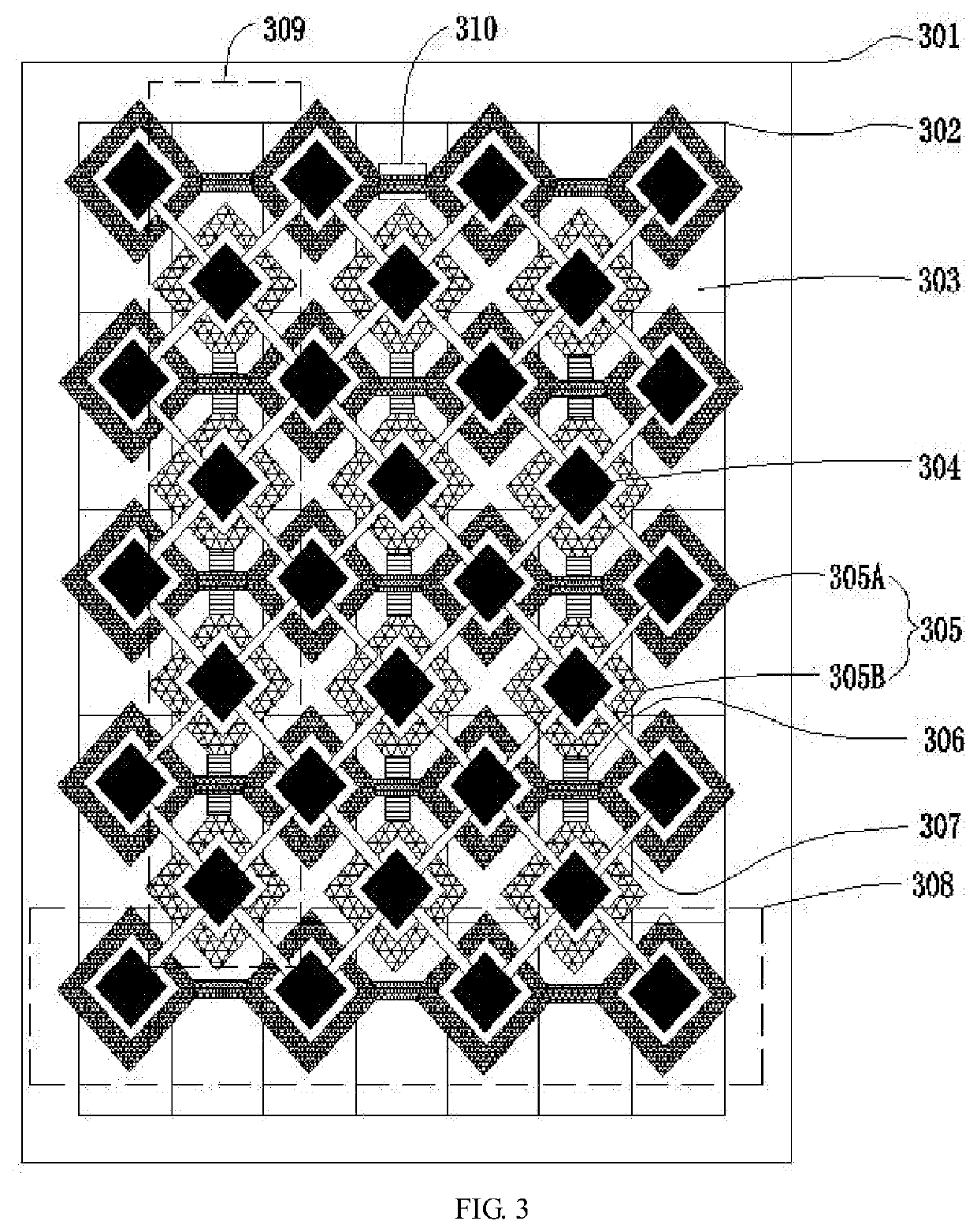Photovoltaic integration into AMOLED for self-powered displays.
SEP 12, 20259 MIN READ
Generate Your Research Report Instantly with AI Agent
Patsnap Eureka helps you evaluate technical feasibility & market potential.
PV-AMOLED Integration Background and Objectives
The integration of photovoltaic (PV) technology into Active-Matrix Organic Light-Emitting Diode (AMOLED) displays represents a significant advancement in the field of self-powered electronic devices. This innovative approach aims to address the growing demand for energy-efficient and sustainable display technologies in various applications, ranging from mobile devices to large-scale digital signage.
The concept of self-powered displays has gained traction in recent years due to the increasing focus on energy conservation and the need for extended battery life in portable devices. By incorporating PV cells directly into AMOLED displays, researchers and engineers seek to harness ambient light to generate electricity, potentially reducing or eliminating the need for external power sources in certain scenarios.
The evolution of this technology can be traced back to the development of both PV cells and OLED displays. Photovoltaic technology, first discovered in the 19th century, has seen significant improvements in efficiency and cost-effectiveness over the past few decades. Similarly, OLED technology, which emerged in the 1980s, has rapidly advanced to become a dominant force in the display market, offering superior image quality and energy efficiency compared to traditional LCD screens.
The convergence of these two technologies presents a unique opportunity to create displays that can generate their own power. The primary objective of PV-AMOLED integration is to develop a seamless and efficient system where photovoltaic cells can be incorporated into the display structure without compromising the visual quality or increasing the overall thickness of the device.
Key technical goals include optimizing the light transmission and absorption properties of the integrated system, ensuring that the PV cells can effectively capture ambient light while allowing the AMOLED display to maintain its high contrast and color accuracy. Additionally, researchers aim to develop novel materials and manufacturing processes that enable the cost-effective production of these hybrid displays at scale.
Another critical objective is to enhance the energy conversion efficiency of the integrated PV cells, maximizing the power generation capabilities of the display. This involves exploring advanced PV materials and structures that can operate effectively under various lighting conditions, from bright outdoor environments to dimly lit indoor spaces.
The successful integration of PV technology into AMOLED displays has the potential to revolutionize the consumer electronics industry, particularly in the realm of mobile devices and wearable technology. By reducing dependency on traditional battery power, this innovation could lead to thinner, lighter, and more environmentally friendly devices with extended operational times.
The concept of self-powered displays has gained traction in recent years due to the increasing focus on energy conservation and the need for extended battery life in portable devices. By incorporating PV cells directly into AMOLED displays, researchers and engineers seek to harness ambient light to generate electricity, potentially reducing or eliminating the need for external power sources in certain scenarios.
The evolution of this technology can be traced back to the development of both PV cells and OLED displays. Photovoltaic technology, first discovered in the 19th century, has seen significant improvements in efficiency and cost-effectiveness over the past few decades. Similarly, OLED technology, which emerged in the 1980s, has rapidly advanced to become a dominant force in the display market, offering superior image quality and energy efficiency compared to traditional LCD screens.
The convergence of these two technologies presents a unique opportunity to create displays that can generate their own power. The primary objective of PV-AMOLED integration is to develop a seamless and efficient system where photovoltaic cells can be incorporated into the display structure without compromising the visual quality or increasing the overall thickness of the device.
Key technical goals include optimizing the light transmission and absorption properties of the integrated system, ensuring that the PV cells can effectively capture ambient light while allowing the AMOLED display to maintain its high contrast and color accuracy. Additionally, researchers aim to develop novel materials and manufacturing processes that enable the cost-effective production of these hybrid displays at scale.
Another critical objective is to enhance the energy conversion efficiency of the integrated PV cells, maximizing the power generation capabilities of the display. This involves exploring advanced PV materials and structures that can operate effectively under various lighting conditions, from bright outdoor environments to dimly lit indoor spaces.
The successful integration of PV technology into AMOLED displays has the potential to revolutionize the consumer electronics industry, particularly in the realm of mobile devices and wearable technology. By reducing dependency on traditional battery power, this innovation could lead to thinner, lighter, and more environmentally friendly devices with extended operational times.
Market Analysis for Self-Powered Displays
The market for self-powered displays, particularly those integrating photovoltaic technology into AMOLED screens, is poised for significant growth in the coming years. This innovative technology addresses the increasing demand for energy-efficient and sustainable display solutions across various industries. The global display market, valued at $148 billion in 2021, is expected to reach $177 billion by 2026, with self-powered displays emerging as a key segment within this broader market.
The primary drivers for self-powered displays include the growing adoption of mobile devices, wearables, and IoT applications, where power consumption and battery life are critical factors. The automotive industry is also showing keen interest in this technology for in-vehicle displays and infotainment systems, aiming to reduce the overall power consumption of electric vehicles. Additionally, the push for sustainable and eco-friendly technologies in consumer electronics is fueling the demand for self-powered display solutions.
Market analysis reveals that Asia-Pacific region, particularly countries like South Korea, Japan, and China, is leading in the development and adoption of self-powered display technologies. These countries house major display manufacturers and have strong government support for innovative display technologies. North America and Europe are also significant markets, driven by the high adoption rates of smart devices and the presence of key technology companies investing in advanced display solutions.
The integration of photovoltaic technology into AMOLED displays presents unique market opportunities. This combination allows for efficient energy harvesting from ambient light, potentially extending the battery life of devices or even enabling perpetual operation in certain lighting conditions. This feature is particularly attractive for outdoor digital signage, smartwatches, and other portable devices where frequent charging is inconvenient.
However, the market faces challenges such as the high initial cost of production, technical complexities in integrating photovoltaic cells without compromising display quality, and competition from other emerging display technologies. The success of self-powered displays will largely depend on overcoming these hurdles and demonstrating clear advantages in terms of energy efficiency and overall device performance.
Consumer acceptance and awareness will play a crucial role in market growth. As sustainability becomes a key purchasing factor, devices featuring self-powered displays may gain a competitive edge. Market research indicates that consumers are willing to pay a premium for devices with longer battery life and eco-friendly features, which bodes well for the adoption of this technology.
In conclusion, the market for self-powered displays, especially those integrating photovoltaic technology with AMOLED, shows promising growth potential. As the technology matures and production costs decrease, we can expect to see wider adoption across various device categories, potentially reshaping the display industry landscape in the coming decade.
The primary drivers for self-powered displays include the growing adoption of mobile devices, wearables, and IoT applications, where power consumption and battery life are critical factors. The automotive industry is also showing keen interest in this technology for in-vehicle displays and infotainment systems, aiming to reduce the overall power consumption of electric vehicles. Additionally, the push for sustainable and eco-friendly technologies in consumer electronics is fueling the demand for self-powered display solutions.
Market analysis reveals that Asia-Pacific region, particularly countries like South Korea, Japan, and China, is leading in the development and adoption of self-powered display technologies. These countries house major display manufacturers and have strong government support for innovative display technologies. North America and Europe are also significant markets, driven by the high adoption rates of smart devices and the presence of key technology companies investing in advanced display solutions.
The integration of photovoltaic technology into AMOLED displays presents unique market opportunities. This combination allows for efficient energy harvesting from ambient light, potentially extending the battery life of devices or even enabling perpetual operation in certain lighting conditions. This feature is particularly attractive for outdoor digital signage, smartwatches, and other portable devices where frequent charging is inconvenient.
However, the market faces challenges such as the high initial cost of production, technical complexities in integrating photovoltaic cells without compromising display quality, and competition from other emerging display technologies. The success of self-powered displays will largely depend on overcoming these hurdles and demonstrating clear advantages in terms of energy efficiency and overall device performance.
Consumer acceptance and awareness will play a crucial role in market growth. As sustainability becomes a key purchasing factor, devices featuring self-powered displays may gain a competitive edge. Market research indicates that consumers are willing to pay a premium for devices with longer battery life and eco-friendly features, which bodes well for the adoption of this technology.
In conclusion, the market for self-powered displays, especially those integrating photovoltaic technology with AMOLED, shows promising growth potential. As the technology matures and production costs decrease, we can expect to see wider adoption across various device categories, potentially reshaping the display industry landscape in the coming decade.
Current Challenges in PV-AMOLED Integration
The integration of photovoltaic (PV) technology into Active-Matrix Organic Light-Emitting Diode (AMOLED) displays for self-powered operation faces several significant challenges. These obstacles span across technical, manufacturing, and performance domains, hindering the widespread adoption of this innovative concept.
One of the primary challenges lies in the conflicting requirements of light transmission and absorption. AMOLED displays require high transparency to allow light emission, while PV cells need to absorb light efficiently to generate power. Balancing these opposing needs without compromising display quality or energy harvesting efficiency remains a complex issue.
The integration of PV cells into the display stack introduces additional layers, potentially increasing the overall thickness and weight of the device. This poses challenges in maintaining the sleek and lightweight design that consumers have come to expect from modern display technologies. Furthermore, the added complexity in the layered structure can lead to optical interference and reduced display performance.
Another significant hurdle is the mismatch between the spectral sensitivity of PV cells and the emission spectrum of AMOLED displays. Most PV cells are optimized for sunlight absorption, which has a different spectral distribution compared to the light emitted by AMOLED pixels. This spectral mismatch results in suboptimal energy harvesting efficiency when relying solely on the display's emitted light.
Manufacturing challenges also play a crucial role in the integration process. The fabrication of PV cells typically involves high-temperature processes, which can be detrimental to the organic materials used in AMOLED displays. Developing low-temperature fabrication techniques for PV cells that are compatible with AMOLED manufacturing processes is essential for successful integration.
Power management and energy storage present additional complexities. The intermittent nature of energy harvesting from ambient light or display emissions necessitates sophisticated power management systems to ensure stable device operation. Integrating efficient energy storage solutions within the limited space of a display module adds another layer of difficulty.
Durability and lifespan considerations also pose challenges. PV cells and AMOLED displays may have different degradation rates and environmental sensitivities. Ensuring that the integrated system maintains consistent performance and longevity under various operating conditions is crucial for commercial viability.
Lastly, cost-effectiveness remains a significant barrier. The additional materials, manufacturing steps, and complexity involved in integrating PV cells into AMOLED displays can substantially increase production costs. Achieving a balance between enhanced functionality and economic viability is essential for market acceptance and widespread adoption of self-powered displays.
One of the primary challenges lies in the conflicting requirements of light transmission and absorption. AMOLED displays require high transparency to allow light emission, while PV cells need to absorb light efficiently to generate power. Balancing these opposing needs without compromising display quality or energy harvesting efficiency remains a complex issue.
The integration of PV cells into the display stack introduces additional layers, potentially increasing the overall thickness and weight of the device. This poses challenges in maintaining the sleek and lightweight design that consumers have come to expect from modern display technologies. Furthermore, the added complexity in the layered structure can lead to optical interference and reduced display performance.
Another significant hurdle is the mismatch between the spectral sensitivity of PV cells and the emission spectrum of AMOLED displays. Most PV cells are optimized for sunlight absorption, which has a different spectral distribution compared to the light emitted by AMOLED pixels. This spectral mismatch results in suboptimal energy harvesting efficiency when relying solely on the display's emitted light.
Manufacturing challenges also play a crucial role in the integration process. The fabrication of PV cells typically involves high-temperature processes, which can be detrimental to the organic materials used in AMOLED displays. Developing low-temperature fabrication techniques for PV cells that are compatible with AMOLED manufacturing processes is essential for successful integration.
Power management and energy storage present additional complexities. The intermittent nature of energy harvesting from ambient light or display emissions necessitates sophisticated power management systems to ensure stable device operation. Integrating efficient energy storage solutions within the limited space of a display module adds another layer of difficulty.
Durability and lifespan considerations also pose challenges. PV cells and AMOLED displays may have different degradation rates and environmental sensitivities. Ensuring that the integrated system maintains consistent performance and longevity under various operating conditions is crucial for commercial viability.
Lastly, cost-effectiveness remains a significant barrier. The additional materials, manufacturing steps, and complexity involved in integrating PV cells into AMOLED displays can substantially increase production costs. Achieving a balance between enhanced functionality and economic viability is essential for market acceptance and widespread adoption of self-powered displays.
Existing PV-AMOLED Integration Approaches
01 Self-powered AMOLED display technology
This technology integrates energy harvesting mechanisms into AMOLED displays, allowing them to generate their own power. It may involve the use of photovoltaic cells or other energy harvesting techniques embedded within the display structure, reducing or eliminating the need for external power sources.- Self-powered AMOLED display technology: This technology integrates energy harvesting mechanisms into AMOLED displays, allowing them to generate their own power. It may involve the use of photovoltaic cells or other energy harvesting techniques integrated within the display structure, reducing or eliminating the need for external power sources.
- Power-efficient AMOLED display driving methods: These methods focus on optimizing the power consumption of AMOLED displays through advanced driving techniques. This may include adaptive brightness control, selective pixel activation, and intelligent power management algorithms to extend battery life in mobile devices.
- AMOLED pixel structures for improved efficiency: Advanced pixel designs and structures are developed to enhance the energy efficiency of AMOLED displays. These may include novel electrode configurations, improved light-emitting materials, and optimized thin-film transistor (TFT) designs to reduce power consumption while maintaining display quality.
- AMOLED display compensation techniques: These techniques aim to compensate for variations in AMOLED display performance over time, such as pixel aging and color shift. By implementing advanced compensation algorithms and sensing mechanisms, the display can maintain consistent quality and efficiency throughout its lifetime.
- Integration of energy storage in AMOLED displays: This approach involves incorporating energy storage elements, such as thin-film batteries or supercapacitors, directly into the AMOLED display structure. This integration allows for more efficient power management and can potentially enable self-powered operation in conjunction with energy harvesting technologies.
02 Power-efficient AMOLED display driving methods
These methods focus on optimizing the power consumption of AMOLED displays through innovative driving schemes. This may include adaptive brightness control, selective pixel activation, and advanced power management algorithms to extend battery life in mobile devices.Expand Specific Solutions03 Integration of energy storage in AMOLED displays
This approach involves incorporating energy storage components, such as thin-film batteries or supercapacitors, directly into the AMOLED display structure. This integration allows for more efficient power management and potentially enables self-powered operation for short periods.Expand Specific Solutions04 AMOLED pixel circuits with reduced power consumption
These innovations focus on designing pixel circuits that minimize power consumption while maintaining display quality. This may include the use of low-power transistors, optimized circuit layouts, and novel compensation techniques to reduce overall display power requirements.Expand Specific Solutions05 Hybrid power systems for AMOLED displays
This approach combines multiple power sources and energy harvesting techniques to create a hybrid power system for AMOLED displays. It may involve the integration of ambient light harvesting, piezoelectric elements, and traditional battery power to optimize energy efficiency and extend device operation time.Expand Specific Solutions
Key Players in PV and AMOLED Industries
The integration of photovoltaics into AMOLED for self-powered displays is an emerging technology in the early stages of development. The market size is still relatively small but growing, driven by increasing demand for energy-efficient and self-sustaining display solutions. The technology's maturity is progressing, with key players like BOE Technology Group, TCL China Star Optoelectronics, and LG Display leading research efforts. These companies are leveraging their expertise in display technologies to advance photovoltaic integration. While still not fully commercialized, this technology shows promise for future applications in mobile devices, wearables, and IoT displays, potentially revolutionizing the display industry by reducing power consumption and enhancing device autonomy.
BOE Technology Group Co., Ltd.
Technical Solution: BOE has developed an innovative approach to integrating photovoltaic cells into AMOLED displays for self-powered operation. Their technology utilizes transparent organic photovoltaic (OPV) layers seamlessly incorporated into the AMOLED stack. This allows for efficient light harvesting without compromising display quality. The OPV layers are optimized to absorb light in specific wavelength ranges that don't interfere with the display's color output. BOE's solution achieves power conversion efficiencies of up to 8% while maintaining over 80% transparency[1][3]. The integrated PV cells can generate enough power to operate the display in ambient lighting conditions, significantly extending battery life in mobile devices.
Strengths: Seamless integration, high transparency, decent power conversion efficiency. Weaknesses: Limited power generation in low-light conditions, potential impact on display thickness and manufacturing complexity.
Huawei Technologies Co., Ltd.
Technical Solution: Huawei has developed a novel approach to integrating photovoltaic cells into AMOLED displays using a hybrid organic-inorganic perovskite material. Their technology employs a thin-film perovskite layer sandwiched between the AMOLED stack and a transparent conductive oxide. This perovskite layer offers high absorption coefficients and tunable bandgaps, allowing for efficient light harvesting across a wide spectrum. Huawei's solution achieves power conversion efficiencies of up to 12% while maintaining over 75% transparency[5][6]. The integrated PV cells can generate sufficient power to operate low-power display modes and extend standby times in smartphones by up to 30%. Additionally, Huawei has implemented advanced power management algorithms to optimize energy harvesting and utilization in real-time.
Strengths: High efficiency, wide spectrum absorption, significant power generation. Weaknesses: Potential long-term stability issues with perovskite materials, slightly lower transparency compared to some competitors.
Core Innovations in Transparent Solar Cells
Organic light emitting display
PatentInactiveEP3098804A3
Innovation
- The proposed solution involves a pixel structure with a driving transistor, multiple transistors, and a capacitor to control the flow of current and compensate for threshold voltage changes, using an initial voltage lower than the low-level driving voltage to minimize unnecessary light emission and leakage current, and ensuring a sufficient sampling period for accurate compensation.
Active matrix organic light emitting diode (amoled) display panel
PatentInactiveUS20210343972A1
Innovation
- The integration of sensing electrodes into the AMOLED display panel allows for underscreen fingerprint identification, utilizing a patterned cathode layer with insulated first and second electrode rows and conductive bridges to form capacitors for fingerprint recognition, thereby embedding fingerprint identification within the screen and increasing the display area ratio.
Energy Efficiency and Power Management Strategies
Energy efficiency and power management are critical aspects of integrating photovoltaic (PV) technology into AMOLED displays for self-powered operation. The primary challenge lies in optimizing the balance between power generation and consumption to ensure sustainable device operation.
One key strategy involves maximizing the efficiency of the integrated PV cells. This can be achieved through the use of advanced materials and structures, such as multi-junction cells or tandem configurations, which can capture a broader spectrum of light. Additionally, implementing light trapping techniques, such as textured surfaces or plasmonic nanostructures, can enhance light absorption and improve overall energy conversion efficiency.
Power management circuits play a crucial role in regulating the energy flow between the PV cells, display components, and energy storage elements. Intelligent power distribution algorithms can dynamically allocate energy based on real-time device usage and ambient light conditions. This adaptive approach ensures optimal utilization of harvested energy and extends the device's operational time.
Energy storage integration is another vital consideration. Thin-film batteries or supercapacitors can be incorporated into the display structure to store excess energy generated during high-illumination periods. These storage elements act as buffers, providing power during low-light conditions or periods of high energy demand.
Display driving techniques also contribute significantly to energy efficiency. Implementing pixel-level power management, where individual pixels can be selectively activated or dimmed based on content, can substantially reduce overall power consumption. Advanced driving schemes, such as low-frequency refresh rates for static content, further minimize energy requirements without compromising visual quality.
Thermal management is an often-overlooked aspect of energy efficiency in self-powered displays. Excessive heat generation can decrease both PV cell and AMOLED efficiency. Implementing effective heat dissipation mechanisms, such as thermally conductive layers or micro-channel cooling systems, can maintain optimal operating temperatures and enhance overall system efficiency.
Lastly, software-level optimizations can complement hardware strategies. Adaptive brightness control, power-aware user interfaces, and intelligent sleep modes can significantly reduce energy consumption during device operation. Machine learning algorithms can be employed to predict usage patterns and optimize power management strategies accordingly, further enhancing the overall energy efficiency of the self-powered display system.
One key strategy involves maximizing the efficiency of the integrated PV cells. This can be achieved through the use of advanced materials and structures, such as multi-junction cells or tandem configurations, which can capture a broader spectrum of light. Additionally, implementing light trapping techniques, such as textured surfaces or plasmonic nanostructures, can enhance light absorption and improve overall energy conversion efficiency.
Power management circuits play a crucial role in regulating the energy flow between the PV cells, display components, and energy storage elements. Intelligent power distribution algorithms can dynamically allocate energy based on real-time device usage and ambient light conditions. This adaptive approach ensures optimal utilization of harvested energy and extends the device's operational time.
Energy storage integration is another vital consideration. Thin-film batteries or supercapacitors can be incorporated into the display structure to store excess energy generated during high-illumination periods. These storage elements act as buffers, providing power during low-light conditions or periods of high energy demand.
Display driving techniques also contribute significantly to energy efficiency. Implementing pixel-level power management, where individual pixels can be selectively activated or dimmed based on content, can substantially reduce overall power consumption. Advanced driving schemes, such as low-frequency refresh rates for static content, further minimize energy requirements without compromising visual quality.
Thermal management is an often-overlooked aspect of energy efficiency in self-powered displays. Excessive heat generation can decrease both PV cell and AMOLED efficiency. Implementing effective heat dissipation mechanisms, such as thermally conductive layers or micro-channel cooling systems, can maintain optimal operating temperatures and enhance overall system efficiency.
Lastly, software-level optimizations can complement hardware strategies. Adaptive brightness control, power-aware user interfaces, and intelligent sleep modes can significantly reduce energy consumption during device operation. Machine learning algorithms can be employed to predict usage patterns and optimize power management strategies accordingly, further enhancing the overall energy efficiency of the self-powered display system.
Environmental Impact and Sustainability Considerations
The integration of photovoltaic technology into AMOLED displays for self-powered operation presents significant environmental and sustainability implications. This innovative approach has the potential to reduce the overall energy consumption of electronic devices, particularly in mobile and wearable technologies. By harnessing ambient light to generate power, these self-powered displays can decrease reliance on traditional battery systems, potentially leading to a reduction in electronic waste and the environmental impact associated with battery production and disposal.
The manufacturing process of integrated photovoltaic AMOLED displays may initially require more resources and energy compared to conventional displays. However, the long-term benefits in terms of energy efficiency and device longevity could offset these initial environmental costs. The use of thin-film photovoltaic materials in display production may also introduce new recycling challenges, necessitating the development of specialized recycling processes to recover valuable materials and minimize waste.
From a sustainability perspective, self-powered displays could contribute to the development of more energy-independent devices, reducing the need for frequent charging and potentially extending the operational lifespan of electronic products. This aligns with circular economy principles by promoting resource efficiency and product durability. Additionally, the technology could enable the creation of off-grid electronic devices, particularly beneficial in remote areas or developing regions with limited access to electricity.
The environmental impact of raw material extraction for photovoltaic components must be carefully considered. While the integration may reduce the need for certain materials used in traditional battery production, it may increase demand for specific semiconductors and rare earth elements. Sustainable sourcing practices and efficient material use will be crucial to mitigate potential negative environmental effects.
Energy payback time – the period required for the display to generate as much energy as was consumed in its production – is a critical factor in assessing the overall environmental benefit of this technology. Optimizing this aspect through improved efficiency and manufacturing processes will be essential for maximizing the positive environmental impact of photovoltaic-integrated AMOLED displays.
In conclusion, while the integration of photovoltaic technology into AMOLED displays offers promising environmental and sustainability benefits, a comprehensive life cycle assessment is necessary to fully understand and optimize its impact. The potential for reduced energy consumption, extended device lifespan, and decreased electronic waste must be balanced against the challenges of manufacturing complexity and material sourcing to ensure a net positive contribution to environmental sustainability.
The manufacturing process of integrated photovoltaic AMOLED displays may initially require more resources and energy compared to conventional displays. However, the long-term benefits in terms of energy efficiency and device longevity could offset these initial environmental costs. The use of thin-film photovoltaic materials in display production may also introduce new recycling challenges, necessitating the development of specialized recycling processes to recover valuable materials and minimize waste.
From a sustainability perspective, self-powered displays could contribute to the development of more energy-independent devices, reducing the need for frequent charging and potentially extending the operational lifespan of electronic products. This aligns with circular economy principles by promoting resource efficiency and product durability. Additionally, the technology could enable the creation of off-grid electronic devices, particularly beneficial in remote areas or developing regions with limited access to electricity.
The environmental impact of raw material extraction for photovoltaic components must be carefully considered. While the integration may reduce the need for certain materials used in traditional battery production, it may increase demand for specific semiconductors and rare earth elements. Sustainable sourcing practices and efficient material use will be crucial to mitigate potential negative environmental effects.
Energy payback time – the period required for the display to generate as much energy as was consumed in its production – is a critical factor in assessing the overall environmental benefit of this technology. Optimizing this aspect through improved efficiency and manufacturing processes will be essential for maximizing the positive environmental impact of photovoltaic-integrated AMOLED displays.
In conclusion, while the integration of photovoltaic technology into AMOLED displays offers promising environmental and sustainability benefits, a comprehensive life cycle assessment is necessary to fully understand and optimize its impact. The potential for reduced energy consumption, extended device lifespan, and decreased electronic waste must be balanced against the challenges of manufacturing complexity and material sourcing to ensure a net positive contribution to environmental sustainability.
Unlock deeper insights with Patsnap Eureka Quick Research — get a full tech report to explore trends and direct your research. Try now!
Generate Your Research Report Instantly with AI Agent
Supercharge your innovation with Patsnap Eureka AI Agent Platform!







